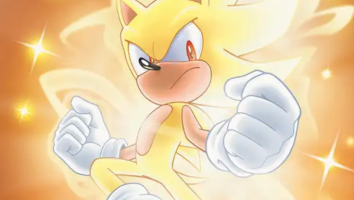The numbers don’t lie. Teens are the next darling demo. It seems that, by the early `80s, their parents, the boomers, were having kids in record numbers and continued to do so well into the `90s. This is not a group to ignore. As with their ubiquitous boomer parents, whatever this group thinks is hot will be really hot. This month, ‘TeenScreen’ checks out which celebrities they are worshiping, what sports leagues are doing to attract them, as well as a profile of a daring new one-hour teen drama on WB that depicts teenage life as it really is.
* * *
Sports leagues are quickly realizing that to capture a bigger cut of the teen market, they are going to have to go where no fan has gone before
* * *
Twenty-five years ago, growing up as a kid in suburban New Jersey, sports consisted of baseball in the summer and football in the fall. Basketball was something to be played, not watched, and hockey was out on the fringe.
That’s how it had always been. Oh, how times have changed. Kids today can choose among numerous alphabet leagues, sports that didn’t even exist 10 years ago such as in-line skating and skateboarding, and even, thanks to Tiger Woods, golf.
But kids have many other choices competing for their time, like movies, computers and video games. The dynamic between sports and kids has shifted, and kids have the home field advantage.
‘The strategies are the same, but the tactics have changed,’ says Chris Widmaier, director of corporate communications for the National Football League (NFL). Sports leagues must now develop ways to promote their respective sports to fit into a teen’s lifestyle. ‘We’re trying to provide access points to the sport and products that conform to that,’ says Widmaier.
This translates into getting the sport into the hands of kids, whether it’s via a joystick on challenging video games like NFL Quarterback Club `98, via the keyboard, with a vibrant Internet presence, via the remote control, through hip programming like the National Basketball Association’s (NBA) Inside Stuff, via fashion-conscious licensed products, or via interactive centers and promotions that make sports an event as opposed to just a game.
On the broadcast side, promotion on MTV and programming produced in an MTV style have served to complement regular game coverage. Major League Soccer (MLS), which considers teens instrumental to the long-term success of the fledgling league, has spent a large percentage of its advertising budget on MTV.
The NBA’s Inside Stuff, in its eighth season, is visually and musically driven and produced to look and feel like something kids would watch on MTV, according to Gregg Winik, vice president of programming and broadcasting at NBA Entertainment.
The NFL, Major League Baseball and the NBA are among the leagues that have courted MTV for exposure on the network’s Rock `n’ Jock specials. The growing popularity of extreme sports such as roller blading, mountain biking and snow surfing are naturals to be produced in the MTV style, and these programs serve as entry points into the sports.
‘The federations see that we’re not stepping on their toes and that we’re expanding exposure to their sports,’ says Alistair Gosling, CEO of U.K.-based X-Dream International, producer of extreme sports programming. Hard-core fans may be interested in game summaries, but leagues have learned that fringe teen fans are attracted to story-driven segments that appeal to their curiosity about going places they normally can’t, like locker rooms, huddles and the bench.
One method that has been successful in bringing the sports experience directly to kids is through traveling interactive activity centers. An interactive exhibition like NBA Jam Van comes complete with interactive games, activities, ‘cool’ NBA information and exhibits that give kids a sense of the game and its stars.
The Women’s National Basketball Association (WNBA), which debuted in 1997, has reached out to expand its fan base by making players available for autograph sessions, clinics and promotional events that bring teens into the action, such as ‘Be a Player for Day,’ in which winners get to sit on the bench with the players during the game.
The MLS Soccer Celebration is an interactive soccer theme park present at every stadium, where kids can kick soccer balls, have their faces painted and play video games. ‘We try to make our games more than just the game itself,’ says MLS executive vice president Randy Bernstein.
The National Hockey League (NHL) has opened its first licensed rink, NHL Skate at Birch Run. Located outside of Detroit, the facility is part ice rink and part family entertainment center, with arcades, virtual reality and interactive hockey games.
Leagues are aggressively working to get their balls, pigskins and pucks into the hands of kids through programs like the NFL’s ‘Punt, Pass and Kick;’ ‘CITY’ (Challenge and Inspire Today’s Youth), an inner-city program; and ‘NFL Flag,’ which brings flag football to middle-school children.
The NHL is trying to increase interest in hockey at the grassroots level, with programs such as ‘Nike NHL Street.’ Targeted to kids age six to 16, it provides equipment for youth centers to set up local street hockey programs. All a kid needs is sneakers. ‘Our research has shown that there’s a direct correlation between being involved in street hockey and being a fan of the NHL,’ says Dina Gilbertie, vice president of youth marketing for the NHL.
To ensure the constant expansion of their fan bases, professional sports leagues must interest kids while kids are forming brand preferences. To get into the game, they have to bring their game to kids in a way that seems hip, cool and relevant to kids’ lives. If not, professional sports leagues may be left sitting on the bench.





















